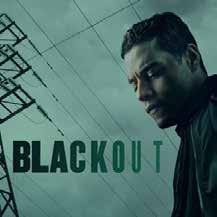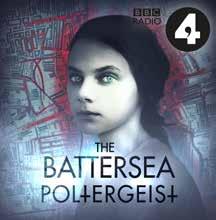
2 minute read
PODCAST FORMATS: PEOPLE CHATTING & PEOPLE TELLING STORIES
The best way to start a podcast analysis is to consider the what and how: What does the podcast actually sound like? What sounds, music, and voices do you hear, and what’s the audio quality like? This naturally leads to questions about how the podcast has been produced: Is there a lot of money, professional people, and good production values involved? Or does the setup sound simpler and more easy-going? What we’re actually focusing on is the format of the podcast.
The American podcast producer Eric Nuzum divides all podcasts into two formats: Podcasts with people chatting and podcasts with people telling stories. Being able to distinguish between these two is an important first step in our analysis, so let’s start with examining them a little further.
Advertisement
Capturing The Listeners
Podcasts have multiple ways to engage the listeners and make us feel like we’re a part of the show. It all depends on the format of the podcast – whether it tells a story or involves people chatting. Listen to the two trailers below and decide what format they each belong to.
Furthermore, comment on how they try to engage us in different ways with voices, music, and other sounds. In other words: How do they establish a parasocial connection with the listeners?
• Introducing No Stupid Questions (US)
(No Stupid Questions trailer)
Running time: 2:16 minutes
Produced by Freakanomics Radio Network, 2020
• Trailer: Season 1 – Look Out For Each Other (USA)
(Blackout trailer)
Running time: 2:20 minutes
Produced by QCODE, 2019
Listen Along While Reading
In this introduction to analysing podcasts, we refer to three podcasts as examples. They will make it easier to understand the podcast terms and analysis method. The three podcasts revolve around the theme of HOME and what happens to people when their sense of “home” is turned upside down. Yet, the podcasts also deal with other subjects and could easily fit into themes like FAMILY, or TERROR, etc.
File on 4 (UK)
"My Homeless Son"
Running time: 37 minutes
Produced by BBC Radio 4, 2018
File on 4 covers current affairs in Britain and abroad, and this episode focuses on how social services and others turned their back on a homeless teenage boy in London, leading to both physical and mental trauma. Through interviews, it builds a case to show that social authorities have a responsibility to create a “home” for children.
Blackout (US) ep. 1 "Pilot"

Running time: 22 minutes
Produced by QCode, 2019
We follow an American radio DJ one morning when his hometown is struck by a major power blackout, isolating the little community and the people in it. We experience everything at close hand, feeling the mystery creeping up on us. Already in this first episode, the concepts of “home” and “feeling at home” change dramatically due to harmful outside forces.
The Battersea Poltergeist (UK)

Ep. 1 "63 Wycliffe Road"
Running time: 31 minutes
Produced by Bafflegab, 2021
A reporter investigates one of England’s most infamous hauntings – a poltergeist which terrified a London family in the 1950s. Through a mix of interviews and re-enactments of real-life scenes, we experience both the investigation and the supernatural events first hand.




